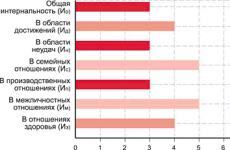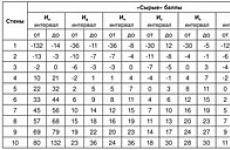How to remove plasticine from clothes and home textiles: all folk recipes. How to remove plasticine from clothes, toys and furniture
Modeling with plasticine is one of the most beloved and important activities for children. But young sculptors can get very carried away and smear clothes with a sticky substance, which is very difficult to remove. I propose to figure out together how to wash plasticine from clothes.
Stage 1. First aid
Before washing plasticine from clothes, it is necessary to carry out a very simple but important manipulation. Try to cool the contaminated area.
The whole point is that when low temperatures paraffin or wax, which is part of the plasticine, is easier to move away from the fabric. You can try one of two ways:
| A photo | Instruction |
 |
Ice cubes
|
 |
Freezer
An even easier way to remove plasticine from trousers or other clothes is to send them to freezer for half an hour. Then scrape off the dirt with the blunt side of the knife. |
Stage 2. Iron and napkins
Removing plasticine from the fabric is just the beginning of the procedures. Most likely, after it there will be a noticeable stain from plasticine. So at this stage, you will need to remove greasy traces as efficiently as possible.

- Spread the contaminated product on ironing board, heat up the iron.
- Lay paper towels on both sides of the stain.
- Gently smooth the plasticine marks, watching how the fat from the fabric passes to the napkins.
- Change wipes as they get dirty.
Do not heat the iron too much - it is best to put it on a delicate ironing mode (50-60 degrees).
Such a measure will help to remove most of the stain from a shirt, trousers or dress, but still it cannot guarantee the complete disappearance of pollution. So let's move on to the third step.
Stage 3. Washing
When all the preliminary procedures have been completed, you can proceed directly to washing the product. By personal experience I know that some stains can be removed by regular soaking, and for some you need to use special products.

Soak
How to remove plasticine stains left after two types of heat treatment with your own hands? Try soaking the product.

- Prepare a strong soapy solution. You can use both laundry soap and Antipyatin.
- Immerse the contaminated product in hot soapy water. Leave it for half an hour.
- Scrub the stain with a brush. If traces of plasticine do not want to disappear from white clothes, rub baking soda directly into the material.
Additional funds
If the question of how to remove plasticine from clothes is still relevant, it's time to move on to "heavy artillery" - special tools that have proven their effectiveness:
| Image | Instruction |
 |
Vegetable oil
|
 |
Ammonia
|
 |
Kerosene
Another way to wash plasticine from clothes is to treat the stain with kerosene.
If this component was not found, it can be replaced with isopropyl alcohol. |
 |
Stain remover
The price of such products as "Vanish" or "Ace Oxi Magic" is higher than for laundry soap or vegetable oil. But they also work very effectively. Just follow the directions and dosages on the label. |
Results
I told how to wash plasticine from clothes so that there is no trace of it. You just have to go through three steps and choose a cleanser. To learn more tricks for removing tough stains, watch the video in this article or ask me a question in the comments.
The content of the article:
Probably, everyone faced such an unpleasant problem as traces of plasticine on clothes and furniture. This issue is most acute for parents, because when there are small children in the house, there will definitely be a box of plasticine. Of course, removing pieces of plasticine from the fabric is not difficult, but the remaining stains can bring a lot of trouble. Most importantly, you need to act immediately and use not only effective, but also proven methods.
Polyethylene is used as the basis for plasticine, including different types rubbers. During the touch of warm fingers, such a mixture melts easily and quickly. It is due to the effect of heat that the dirt spreads rapidly through the fabric. However, the most big problem makes up a dye, which is also part of the plasticine. In fact, removing grease is quite simple, but removing paint stains will be problematic. That is why you need to be very careful when removing stains from plasticine clothes.
To completely remove traces of plasticine from clothes, you need to start acting immediately, as soon as a stain has been discovered. It will be much more difficult to remove an old stain, unlike a fresh one.
First you need to try to remove particles of plasticine from the clothes as much as possible. Then it's taken paper towel or a napkin, which is applied to the remains of plasticine and pressed as tightly as possible. This helps to remove the remaining fat, after which the cleaning procedure continues.
After completion of all procedures, without fail clothes need to be washed. Depending on the type of material, the washing mode is selected. Before using one or another stain remover, first a small test is carried out on an inconspicuous place. If selected Wrong way, there is a risk of completely ruining the clothes. In the most severe cases, it is necessary to hand over the product to dry cleaning.
When removing plasticine, do not rub the place of contamination too hard, otherwise the dirt will be absorbed into the fabric even more. As a result, you will have to spend much more time and effort to completely remove the plasticine stain from your clothes.
Be sure to carefully study the label on the clothing, as it indicates what should not be done during the cleaning procedure of the product.
It will not be enough just to wash the stain, because warm water can melt the plasticine and as a result it will be on all the clothes and then the thing will have to be thrown away.
Using freezer to remove plasticine from clothes

One of the simplest yet effective methods removing plasticine from fabric is the freezing method. The cleaning procedure is as follows:
- If you need to remove a small stain, you can use an ice cube. First of all, all the remnants of plasticine are removed from the fabric with a wooden skewer. It is important that all movements are directed from top to bottom, and not smearing the mass in different directions.
- Ice is placed in a metal container, which is placed on top of the stain. After 30 minutes, carefully sharp knife remove plasticine residue. You must work very carefully so as not to accidentally cut the fabric. Then the thing is erased in the usual way.
- When the pollution big size you can use the freezer. Clothes are folded and placed in a clean plastic bag, tied up and placed in the freezer.
- The product is left for several hours in the refrigerator. During this time, the clay will harden and it will be easy to remove.
How to remove plasticine from clothes by heating?

If the cold did not help to clean the plasticine from the fabric, you can try to heat it. However, in this case, everything must be done as quickly as possible so that the stain does not spread over the entire fabric:
- It is necessary to prepare clean paper napkins in advance (you can use other material with a high degree of absorption). A great option would be plain toilet paper.
- The product is laid out on flat surface in one layer.
- A layer of paper is placed under the dirty part, which is also located on top.
- On the minimum mode, the iron heats up (you can set the "silk" function).
- The material is ironed, while constantly changing napkins for clean ones. Plasticine will quickly soak into the paper.
- It is necessary to iron the fabric until the stain completely disappears.
- At the end, the product must be washed.
Using baking soda and soap to remove plasticine from clothes

Many housewives know about the unique properties of laundry soap, because it universal remedy, which will help get rid of almost any type of pollution.
To remove plasticine from clothes, you need to use laundry soap in combination with baking soda:
- First you need to carefully remove the remnants of plasticine from the fabric with a sharp knife.
- Then a concentrated soap solution is made - soap is ground on a grater, transferred to a small container and poured with boiling water.
- After the water has cooled, the contaminated item is placed in the liquid and left for about 2 hours.
- A brush with stiff bristles is taken and the area of contamination is wiped.
- After each movement, the bristles of the brush should be cleaned with a paper towel.
- Thanks to this, the plasticine will not spread to other parts of the fabric.
- Then a thick slurry is made from soda and water, which is rubbed directly into the stain.
- The cleaning procedure should be carried out until the stain is completely removed.
- At the end, the product is washed in the usual way.
How to remove plasticine from clothes at home with vegetable oil?

If the previous methods did not help, you can use simple vegetable oil. However, you need to act very carefully so as not to completely spoil the thing.
The cleaning procedure is as follows:
- A small amount of vegetable oil is applied to the site of contamination.
- To prevent the oil from spreading, you need to fold the fabric in such a way that a small depression is obtained at the site of contamination.
- The oil is left for about 2 hours.
- After the specified time, plasticine is removed with clean napkins.
- You need to try to soak the oil from the fabric with napkins.
- To remove oil residue, you can use dishwashing detergent, which should be applied immediately.
- The place of contamination is well wiped, after which the product is washed in the usual way.
The use of kerosene to remove plasticine from clothes

Kerosene for cleaning clothes has been used for quite a long time. In addition, today on sale you can find purified kerosene, which does not have an unpleasant odor.
To remove plasticine from clothes, you need to proceed as follows:
- It is necessary to work with kerosene very carefully, as there is a risk of damaging the fabric.
- Kerosene can only be used for processing dry material.
- The product is placed on a flat surface.
- A cotton pad is soaked in kerosene, squeezed out and applied to the place of contamination.
- After 5-10 minutes, the cotton pad is removed.
- Excess kerosene is soaked with a paper towel.
- Before washing a thing, wipe the spot with a slice of lemon.
- Washing powder should be replaced with dishwashing detergent.
How to remove plasticine from clothes with ammonia?

If there are no special cleaning products for fabric treatment, you can use simple ammonia, which is in almost every home. This tool will help to quickly remove a small stain from plasticine:
- It is strictly forbidden to use this product in its pure form, so ammonia is first diluted with a small amount of cold water - 0.5 tbsp. liquid, 5 drops are taken.
- There are several ways to remove traces of plasticine - the place of contamination is wiped with a cotton pad previously moistened with a solution until the dirt completely disappears.
- You can use another method - a cotton pad soaked in a solution is applied directly to the site of contamination and left for about half an hour.
- After the specified time, you need to thoroughly rinse the item in cold water, which will help remove the pungent smell of alcohol.
- At the end, the product must be washed using powder and conditioner.
Using a stain remover to remove plasticine from clothes at home

Home remedies are not always effective in dealing with colored stains that may remain from plasticine. In this case, you can use modern chemicals for cleaning, for example, special stain removers.
To date, there are quite a few such tools, you need to carefully study the instructions before using:
- In most cases, the gel or powder is added to the water during the washing of the product or used for soaking.
- Directly the place of contamination is wetted with warm water.
- According to the instructions, the stain remover is diluted and poured onto the place of contamination.
- After 15-20 minutes, you need to thoroughly wash the item using powder.
How to remove plasticine from white clothes?

Products made of light and white fabric need careful care. That is why, when removing traces of plasticine, you must be extremely careful, since this material is very delicate and easy to spoil:
- It is strictly forbidden to use whiteness and other cleaning products, which include bleach. Such a solution will not bleach the material, but the fabric will acquire an ugly yellow tint.
- It is recommended to use gentle agents - for example, hydrogen peroxide. The product gently bleaches the stain, but the cleaning process will take quite a long time. First, the remains of plasticine are removed, after which a clean cloth is moistened with hydrogen peroxide and the stain is wiped. This procedure is repeated until the dirt is completely removed. At the end, the product is washed in the usual way.
- You can also use special oxygen bleaches, which will help not only quickly remove the plasticine stain, but also will not spoil the thing.
How to remove plasticine stain on colored fabric?

- To clean delicate items, especially if the fabric has a color pattern, you need to use soft products. For example, a mixture of dishwashing detergent and baking soda will help to cope with a plasticine stain.
- The powder is combined with the gel until a gel-like composition is obtained.
- The product is applied to the stain and left for about 30 minutes.
- After the specified time, the place of contamination is wiped with a soft toothbrush.
- If necessary, a second cleaning procedure is carried out.
- After the stain is completely removed, the product must be washed in warm water.
This material can be used not only for modeling, but also as a means for cleaning dirt from paper and other hard surfaces, such as wallpaper. The composition of classic plasticine includes purified clay, wax, fats, color dyes and special substances that prevent drying. Recently, synthetics have been added to it, for example, rubber, polyvinyl chloride, polyethylene, etc.
It is especially difficult to clean plasticine from any fabric, both natural and synthetic, including clothing.
Plasticine itself is quite easy to clean, due to its lumpy structure. However, the specific composition of the material determines the fact that it is able to leave behind very clearly visible traces of fat, as well as a variety of colored spots. It's pretty hard to get them out.
Despite the obvious advantages of plastic mass, this disadvantage often leads to the rejection of its use. It is especially difficult to clean plasticine from any fabric, both natural and synthetic, including clothing.
- first of all, the adhering mass of plasticine is removed, and only then - the spots left by it;
- in most cases, it is no more difficult to clean pollution from plastic mass than any;
- should resort to the use of standard cleaning and detergents designed specifically for domestic use, and not various overly aggressive solvents, such as acetone;
- special care must be taken when working with white clothing. In this case, it is strongly recommended to use bleaches;
- the cleaning method used depends on the type of fabric. Natural ones get rid of unattractive stains through appropriate mild preparations, synthetics can be subjected to more severe processing. Moreover, in the second case, the use of ammonia or isopropyl alcohol is strictly prohibited;
- due to the locality of contamination, washing should preferably be carried out manually, since the washing machine will not be able to exert the necessary force in one specific area;
- do not rub the stain too hard, as this will most likely damage the fibers of the fabric, which may even cause it to tear.
Before proceeding with the elimination of stains left by plasticine, it is necessary to remove it from the surface to be cleaned. As a rule, a small amount of material sticks, although in some cases, especially when it comes to a restless or inattentive child, it can be quite a lot. How to clean plasticine from clothes, namely its mass?
It all depends on its density and rigidity. If it is hard enough, you need to take a knife and scrape off the plasticine with its blunt side until only one stain remains. Other tools, such as scissors or a modeling spatula, are also well suited for this purpose. Here you also need to focus on the type of fabric - the softer it is, the dumber the device used should be.
It is known that plasticine at room temperature is characterized by a viscous and soft state of aggregation. This makes the use of the above method irrelevant, since the material will simply be smeared on clothes even more, which will worsen the situation.

Before proceeding with the elimination of stains left by plasticine, it is necessary to remove it from the surface to be cleaned.
- the thing that needs cleaning is placed in a regular plastic bag;
- then it goes into the freezer;
- there it is kept until it completely hardens. Freezing time directly depends on the thickness of the layer of adhering mass. On average, about 30 minutes is enough;
- clothes are removed from the freezer, and then from a plastic bag;
- frozen plasticine quickly breaks into pieces;
- separate parts of the material are scraped off with the same tools described above.
This rather simple method gives good results. The purpose of freezing cold store is that plasticine at low temperatures loses a significant part of its elasticity and flexibility. Thanks to this, it will be much easier to remove it, since it will no longer be smeared all over the clothes and stick directly to the tools used.
In no case should you do this with your bare hands - the heat from your fingers will quickly begin to melt the material, as a result, you will have to resort to freezing again.

It is very important to remove the plastic mass using cold tools.
After completing this procedure, the bulk of the plasticine will be eliminated. But this will not make the clothes clean - the remaining stain literally eats into the fibers of the fabric, since the flexibility of the material allows it to penetrate deep into its structure.
How to remove plasticine from clothes - removing stains
Today, stores specializing in the sale of household chemicals offer an impressive range of appropriate cleaning products that can cope with literally any type of dirt, including plasticine stains. However, their major disadvantage is that high price. In order not to spend money on the purchase of such funds, it is recommended to use traditional, home-made methods that require the use of components that are present in literally every kitchen.
Laundry soap
Perhaps the most common option for dealing with plasticine stains. The effectiveness of this tool is due to the high percentage of alkali. Laundry soap will help remove stains from all types of fabrics, but it is highly recommended to use it if clothes made of light and plain fabrics require cleaning.
Mode of application:
- the soap is rubbed on a grater, after which a concentrated soap solution is prepared from such chips;
- clothes are soaked in it, for about 15-25 minutes, depending on the complexity of the stains;
- after removal from the solution, the place of contamination is additionally rubbed with soap;
- for cleaning, a regular clothes brush is used, but in no case is it too hard;
- rinse things in warm water, preferably running.





Before the start of the event, it is strongly recommended to study the permissible temperature regime of washing this product. If, after completing the procedure, the stain is not completely removed, you can pour a little ordinary baking soda on it, rub it and rinse again.
Ammonia
An excellent tool for dealing with stains left by plasticine. But it has certain limitations, the most important of which was indicated above, namely, the substance cannot be used for synthetic fabrics, only for natural ones.
Here's what to do:
- preparing an aqueous solution ammonia. To do this, take 10 drops of the substance per glass pure water;
- in the solution, it is necessary to moisten a regular cotton swab or disk;
- the stain on the clothes is carefully wiped with a moistened swab or disc until there is no trace left of it;
- Next, you need to rinse the item thoroughly. After the procedure, the specific smell of ammonia must necessarily disappear completely;
- the final step is washing. Here special requirements No, you can resort to both hand and machine wash.





An alternative to ammonia is this. It has a similar effectiveness, but also cannot be used to remove stains from synthetic fabrics.
The paradox is that fatty vegetable oil can remove the same greasy stain from plastic mass. This method is quite simple, and therefore, if you are looking for how to remove plasticine from clothes without resorting to a long search for a suitable product, it is the most optimal. It consists in the fact that you need to take an ordinary dry cloth and moisten it in oil, then rub the stain with it until it disappears.
It goes without saying that instead of plasticine contamination, oily vegetable oil will appear. But it is much easier to remove it - you need to pour a viscous dish gel on it and leave it for a while. After that, the gel is washed off, and the clothes are placed in the washing machine for further washing.

Fatty vegetable oil can remove the same greasy stain from plastic
Washing is strongly recommended at the maximum temperature for which this particular fabric is designed. By the way, it is with the help of vegetable oil that you can remove the adhering plastic mass from the child's hair. The procedure is quite similar and consists in actively rubbing the product into the hair and scalp.
If you don’t want to cook any home remedies created according to folk recipes, you can just go to a household chemicals store and purchase a specialized stain remover. The method of its application in this case is as follows:
- the product is diluted in water, according to the existing instructions;
- the contaminated thing is soaked in the created solution;
- after that, washing is carried out - both by hand and by machine, depending on the type of fabric or the characteristics of the clothing itself.

If you don’t want to cook any home remedies created according to folk recipes, you can just go to a household chemicals store and purchase a specialized stain remover.
Among alternatives stands out the use of kerosene. It must be cleansed without fail. Due to its persistent and specific smell, after the procedure for removing traces of plastic mass, it is necessary to thoroughly rinse and wash the item.
As a rule, most often plasticine leaves its marks on the pants. It can be jeans or more. classic options such as school pants. There is a fairly simple method, thanks to which it will be possible to eliminate unattractive pollution from this type of clothing without significant difficulties and time costs:
- trousers are turned inside out and then placed on a hard surface, such as a table or ironing board;
- the place of contamination is lined with paper napkins, both from below and from above. It is recommended to lay them in several layers. Regular newspapers can also be used instead of napkins;
- the iron heats up, to an average temperature of about 50-60 degrees;
- the iron is applied to a napkin or newspaper. The essence of the method is that under the influence high temperature plasticine melts and prints on paper;
- you need to change dirty pads until they become clean after the next application of the iron;
- the cleaned place is washed with standard detergents.

Most often, plasticine leaves its marks on pants.
You should not save on napkins or newspapers - the layer should not only be thick enough, but also have an area that would exceed the dimensions of the iron sole.
To date, the solution to such a common question as how to remove plasticine from clothes is characterized by considerable diversity. Based on the above, we can draw a simple conclusion - the elimination of fatty deposits from plastic mass is possible through the use of both store and home remedies.
It must be understood that when carrying out this procedure, it is recommended to strictly observe the rules of personal safety, use gloves and in no case entrust its implementation to children or minors.
In order not to have to clean your own clothes from plasticine, you can simply protect them from getting into this material. An ordinary apron, sleeves, as well as modeling on special board through suitable tools- and the problem will not bother for a long time.
With the advent of children in the house, the issue of cleanliness of clothes becomes especially acute. At first, mothers are puzzled by how to remove traces of food and juices from things. Then they learn to wash paints and felt-tip pens, and when the child gets older and starts doing creative crafts, another task arises - how to remove the plasticine stain. True, plasticine on the fabric itself is not terrible. The problem is created by the traces remaining from it, containing fat and color pigment.
How to remove plasticine from clothes without traces
Plasticine is a mixture of paraffin, wax, fats and dyes. After removing the top layer of the sticky mass, a greasy colored spot will remain in its place. The mistake of inexperienced housewives is an attempt to wash plasticine in washing machine. This washing will “seal” the wax into the structure of the fabric and make it more difficult to remove.
Do not try to immediately wipe the plasticine with a knife either, this will not give any result, except for possible damage to clothes. There are a few effective ways how to remove traces of plasticine.
- Freezing - place the contaminated item in a plastic bag, then place in the freezer for 30 minutes. After freezing, the sticky substance quickly breaks into small pieces. Now, with the back (not sharp) side of the knife, carefully scrape off the stain. If the thing is too large, use an ice pack: attach it to the stain.
- Heating - for this you can use a hair dryer or an iron heated to 50-60 degrees. Before cleaning clothes from plasticine, cover the stained area with paper. Then heat with an iron, softening the sticky substance. Remove the remaining stain with a tissue and then wash with soapy water.

You can use the following tools to remove plasticine stains:
- Ammonia. They need to soak the damaged area of \u200b\u200bthe clothing. Dilute 10 drops of ammonia in a glass of water, treat the stain, then leave the item for half an hour. After washing the item in the standard way in the machine.
- Kerosene. This substance dissolves fat well. Washes off with washing powder. Take a piece of cotton wool, moisten it with kerosene, then wipe the stain thoroughly. After 15 minutes, rinse the item, and then wash it in warm water.
- Vegetable oil. To do this, you need to take a piece of cloth, wet it with oil, then gently wipe the stain. When the fabric of the clothing is well saturated, the sticky substance will fall behind. But then there will be new problem- a greasy mark on the product. To remove it, use a dishwashing detergent, such as Fairy. Then wash the item in the washing machine.
- WD-40. The tool is suitable for processing synthetic fabrics. Apply it for 5 minutes, clean the stain with a tissue, and then wash the item in the machine.
To eliminate multi-colored stains, you can use stain removers that easily solve this problem. For example, Vanish, ACE, Amway, Antipyatin, Maxim soap.

To remove the stain, follow these instructions:
- first remove the sticky substance mechanically;
- place a white cloth under the contaminated area;
- take another piece of cloth or sponge and moisten with liquid stain remover;
- apply the product to the stain, then wait a few minutes until the sticky substance dissolves;
- rinse the product and wash in the usual way.
Before using the stain remover, you need to try its action on an inconspicuous area of \u200b\u200bthe product, so as not to accidentally spoil the fabric during the process.
Apart from special means you can use ordinary laundry soap and soda:
- dissolve a small piece of laundry soap in hot water;
- apply the solution to the damaged area of \u200b\u200bthe product, leave for 20 minutes;
- rub the stain thoroughly with a brush or sponge;
- if the fabric is thin, then carefully rub the thing with your hands;
- sprinkle the stain with soda and leave for another 15 minutes;
- wash the product in the machine at a temperature of 60 degrees or by hand.
A way to remove smart plasticine without stains
Smart plasticine is a rubber toy like plasticine: it takes any shape and changes its state (flows or hardens, tears or stretches), but not under the influence of heat, like ordinary plasticine, but as a result of the intensity of mechanical action. Throw on the floor - it will bounce like a rubber ball, slowly pull or put on the table - it will spread like condensed milk.

If the child played with "smart plasticine" and he remained on the clothes, then you should not be upset and throw the thing away. You can remove it from the fabric. First, try to mechanically remove the plasticine from the clothes as much as possible, you can use a scraper. What could not be scraped off is removed with isopropyl alcohol or a liquid containing it.
For example, a car windshield wiper is suitable. Pour it on the resulting stain, wait a while, and the plasticine will dissolve. Then remove the residue with a paper towel. If you doubt whether this method of removing plasticine can be used on things, then test on an inconspicuous area of \u200b\u200bthe fabric. However, keep in mind that this will not work with synthetic fabrics. Alcohol can dissolve the fabric itself. In this case, take the item to the dry cleaner and report that the fabric is stained with silicone-based material.
It is difficult to find a child who does not like to sculpt from plasticine. And for mothers, this sweet childish joy often turns into additional troubles and worries - after all, removing plasticine stains from clothes, upholstered furniture and carpets the first time is quite difficult. Regular washing in the washing machine will not help in this case, even if you use expensive stain removers. But what about, for example, a soiled sofa? You can't put it in the machine.
According to the women's online magazine "The Beautiful Half", plasticine pollution is not as terrible as it looks. You can get rid of them if you really want to. The main thing is to find your own approach to everyone. Read in the article:
- how to remove plasticine stains from clothes;
- how to remove traces of "children's creativity" from upholstered furniture and carpets;
- how to deal with plasticine pollution on the wallpaper;
- what to do with stains from "smart" plasticine.
How to get rid of plasticine stains on clothes?
It is easier to remove plasticine “decorations” from clothes than from textile coverings of interior items. Here are a few ways, take your pick.
How to remove plasticine stains from upholstered furniture and carpets?
Clean paper towel, preferably white color, or a sheet of office writing paper, place on the stain and iron it on top with a moderately heated iron. You can also use a hairdryer to dry your hair and simply direct a jet of hot air over the paper to the dirty place. Colored plasticine particles will stick to the paper, and only a greasy stain will remain on the surface of upholstered furniture or carpet. It is treated with a degreasing dishwashing detergent and clean water. In general, we have an article on our website about how to remove grease stains - there you can find many other interesting methods.
How to remove plasticine stains from wallpaper?
If the surface of your wallpaper is more or less smooth, then the scheme of actions will be the same as with upholstered furniture: pick up a napkin and an iron, and gently treat greasy stains with water and a degreasing detergent. FROM embossed wallpaper it will be more difficult: here it would be nice to recall the proverb that they knock out a wedge with a wedge. In other words, you need to take a lump of white or other as light as possible plasticine and stick it over the ill-fated stain, and then, as it were, tear it off the wall with a sharp movement, press it again and tear it off again. This manipulation must be repeated several times until the light plasticine “pulls out” the color completely. The remains of a dirty stain are removed as described above - with clean paper, exposure to heat and dishwashing gel.
Removing stains from smart plasticine
The so-called smart plasticine, also known as "handgam" or "gum for hands" is not intended for children at all, but for adults - it can be used to relieve stress and restore the psycho-emotional background. The material for its manufacture is silicone, not wax. Not suitable for removing stains from "smart" plasticine traditional recipes. At home, this problem can be solved independently only if we are talking about stains left on the surface of natural fabrics (cotton, linen, wool, silk). Look in hardware stores for a product called cleaning alcohol, known in chemistry as 70% isopropyl alcohol. You can pour it directly on the stain, which will begin to dissolve before your eyes, and blot the remnants with a napkin.
You won’t be able to remove traces of “gum for hands” from synthetic surfaces on your own: clothes or carpet will need to be dry-cleaned, and specialists from the cleaning service will be called in to save upholstered furniture.
P.S.: You can express your opinion on how to remove plasticine stains in the comments below the article.
We also recommend reading articles:
How to remove an iron stain: with minimal chances
How to remove sweat stains: saving your favorite things
Fur cleaning at home: gently and gently
How to wash a down jacket: machine and manual methods






